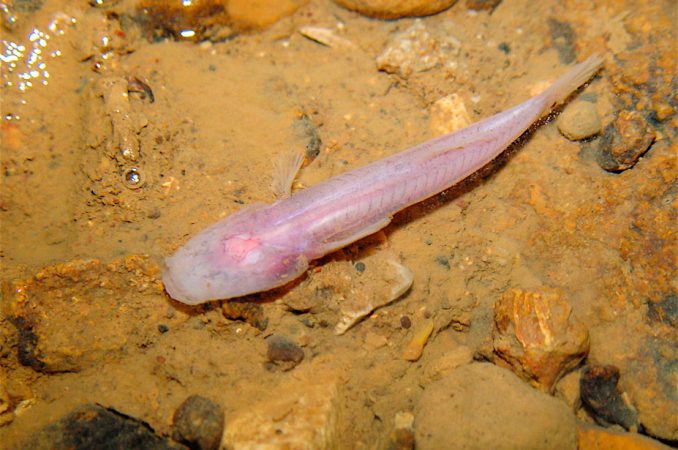No high notes for these blind fish
Cave dwellers that can't see are also partially deaf

Fish that live in dark caves often can’t see. Some don’t even have eyes. Now scientists report that some of these fish don’t hear so well either. The researchers have discovered two species of blind, cave-dwelling fish that are deaf to high-pitched sounds.
“I was really surprised,” Daphne Soares, told Science News. “I expected them to hear much better than the surface fishes.” Soares, a biologist at the University of Maryland in College Park, compares the brain functions of closely related animal species.
In the new study, her team compared the hearing abilities of two species of blind, cave-dwelling fish to those of a related, nearly blind fish species. Those fish can only detect light and darkness. The truly blind cave dwellers, known as northern cavefish and southern cavefish, come from a dark habitat in Kentucky. Their nearly blind kin, called spring cavefish, were collected from a lake in Tennessee.
In the laboratory, the scientists played sounds for the fish while monitoring activity in the animals’ brains. The brains responded in both types of fish to sounds that reach about as high as the top notes of a trumpet. Then the researchers played even higher-pitched sounds, ones more typical of a flute’s upper range. This triggered activity in brains of the semi-blind fish, indicating this species heard them. But the truly blind fish didn’t react; they couldn’t hear these pitches.
Later, the scientists returned to listen to sounds in the blind fishes’ caves. There high-pitched noises were also the loudest. That suggests the blind fish were tuning out the loudest noises in their habitat. Drips and ripples within cave pools represented one possible source of these high sounds.
Hearing loss wasn’t the only difference that Soares and her coworkers observed. Fish can hear sounds using special cells in their ears. (Yes, fish have ears.) When the scientists counted these cells in both types of fish, they found that the blind fish had fewer of them.
Soares told Science News that the fish may have evolved other senses to make up for not seeing or hearing well. Most fish have a sixth sense that helps them detect vibrations in the water. This sense arises from special organs called neuromasts on and just below a fish’s skin. Neuromasts have tiny hair cells that detect motion. Soares noted that cave-dwelling fish have more neuromasts than fish that live near the surface.
Scientists don’t know yet how the fish lost some of their hearing, biologist Martina Bradic told Science News. Bradic, who was not involved in the study, works at New York University. A fish’s hearing may differ based on the environment in which it grew up. It’s also possible that their partial deafness was one way that their species adapted to an especially noisy world.
Power Words
neuromast A special type of organ in fish that senses vibrations in the water.
biology The study of living things.
cavefish A small, colorless fish that lives only in limestone caves in North America.
habitat The typical natural environment that an organisms lives in — or inhabits. Often, many plants and animals share the same habitat, which may be a coral reef, marsh or mountain meadow.
pitch The quality of a sound set by the rate of vibrations producing it; the degree of highness or lowness of a tone.







